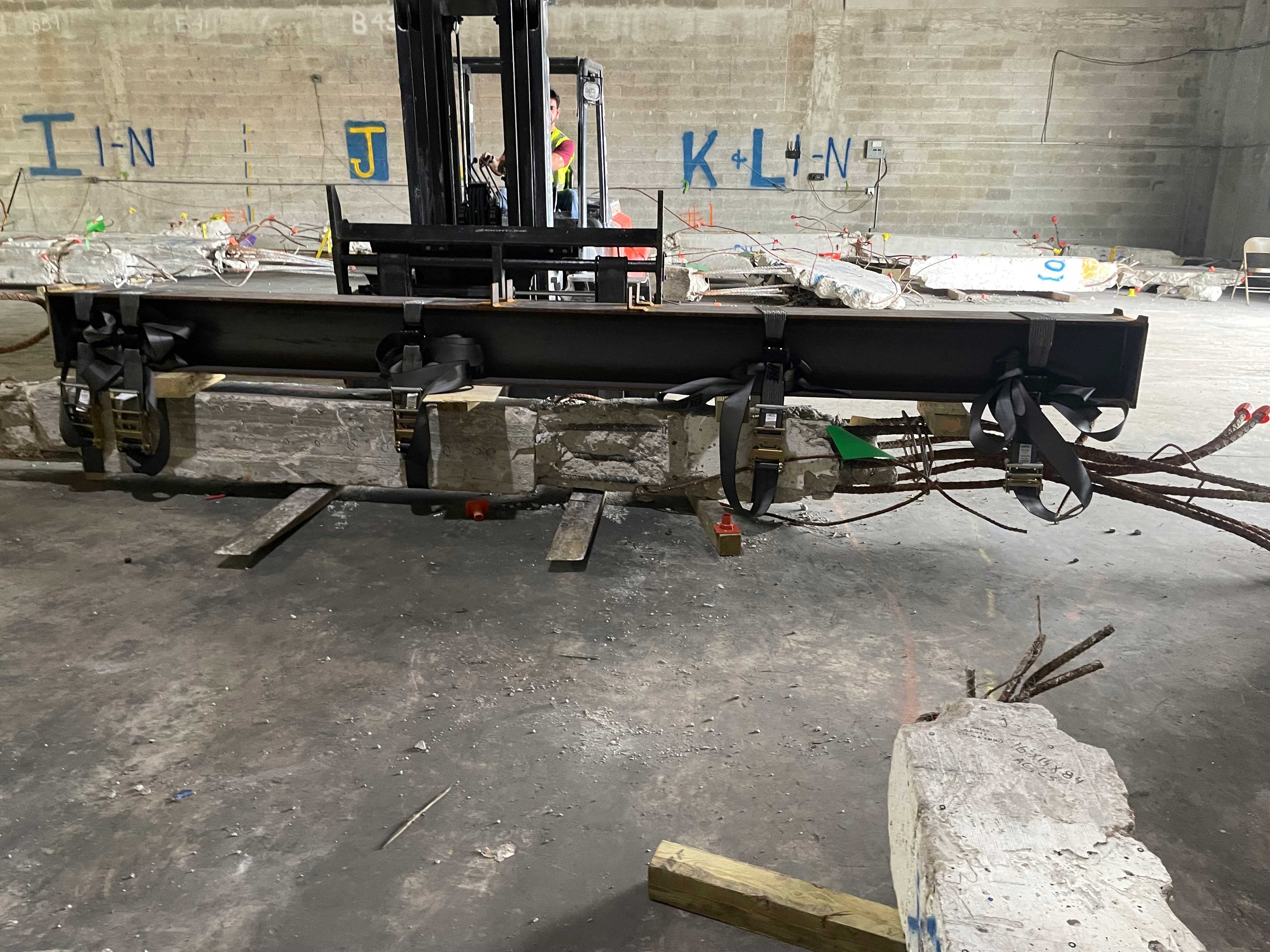May 31, 2023, Champlain Towers South Investigation Update: Second Warehouse Will Allow New Phase of Testing

On May 11, 2023, the Miami-Dade Police Department (MDPD) and the National Construction Safety Team (NCST) finished moving a portion of evidence retrieved from the Champlain Towers South building into a second warehouse. The move provides the team members with the space needed to safely access the specimens and begin the next phase of evidence analysis, which will include extracting samples of concrete and reinforcing steel from the specimens retrieved from the Surfside, Florida, collapse site. The challenging move of more than 300 building specimens was managed by MDPD contractors and subcontractors and overseen by NIST staff.
“The first warehouse was not large enough to allow our staff members and others to safely conduct all of the analysis that needs to be done to help us understand the condition of the building materials at the time of the collapse,” said Judith Mitrani-Reiser, co-lead of the investigation. “This second, larger warehouse will allow us to create sufficient space around each specimen so that we can bring in equipment to safely manipulate, cut and core specimens to extract samples.”
The move of the evidence required careful coordination and execution to ensure no specimens were damaged. The NCST team followed a strict chain of custody process with extensive documentation at each step.
“In order to preserve the chain of custody, we had team members at the original warehouse checking what was loaded onto the truck, and at the second warehouse verifying that what was loaded onto the truck at the previous facility arrived at the new facility in the same condition as when it was loaded,” said Chris Segura, co-lead of the investigation’s evidence preservation project. “At times, we also had staff accompanying the transport itself.”

Before the move, the investigation focused on structural modeling, interviews of eyewitnesses and others familiar with the building, reviews of historical documents, and nondestructive testing. This type of testing uses methods such as visual inspection and measuring how sound moves through the evidence specimens to assess a range of material properties without cutting into or physically altering the specimens. Nondestructive testing helps the team better understand the building’s as-built condition and develop the testing plan for extracting samples through what is called invasive testing. An update on the nondestructive testing and other work related to the investigation will be presented at the NCST Advisory Committee meeting on June 14-15, 2023, which is open to the public. Registration details can be found in the Federal Register notice for the meeting.
The first phase of invasive testing has now begun, led by engineering and materials science experts from the NCST and the U.S. Army Corps of Engineers.
“Concrete cores and steel reinforcing bar samples will be tested to determine their strength and deformation properties,” said Glenn Bell, co-lead of the investigation. “These properties will be used in our computer simulation models of the building failure and will also inform the composition of the concrete we mix to construct laboratory mock-ups of building components to use as test specimens. Concrete samples will also be subjected to microscopy, chemical analysis and other materials testing to evaluate sample integrity and durability, and to check for deterioration and aging mechanisms.”
The investigation into what caused the June 24, 2021, tragedy is one of the most complex and challenging of its type ever undertaken, with no obvious initiating event for the collapse. NIST anticipates that the technical aspects of the investigation will be completed by the spring of 2024 and a report with recommendations will issue a year later.
More photos are available on the news page for this investigation.

